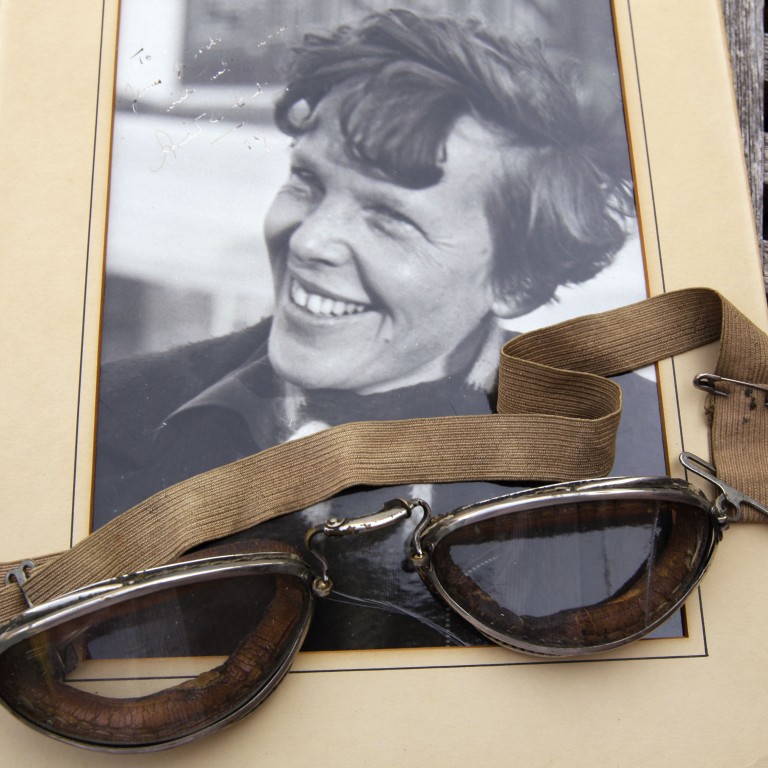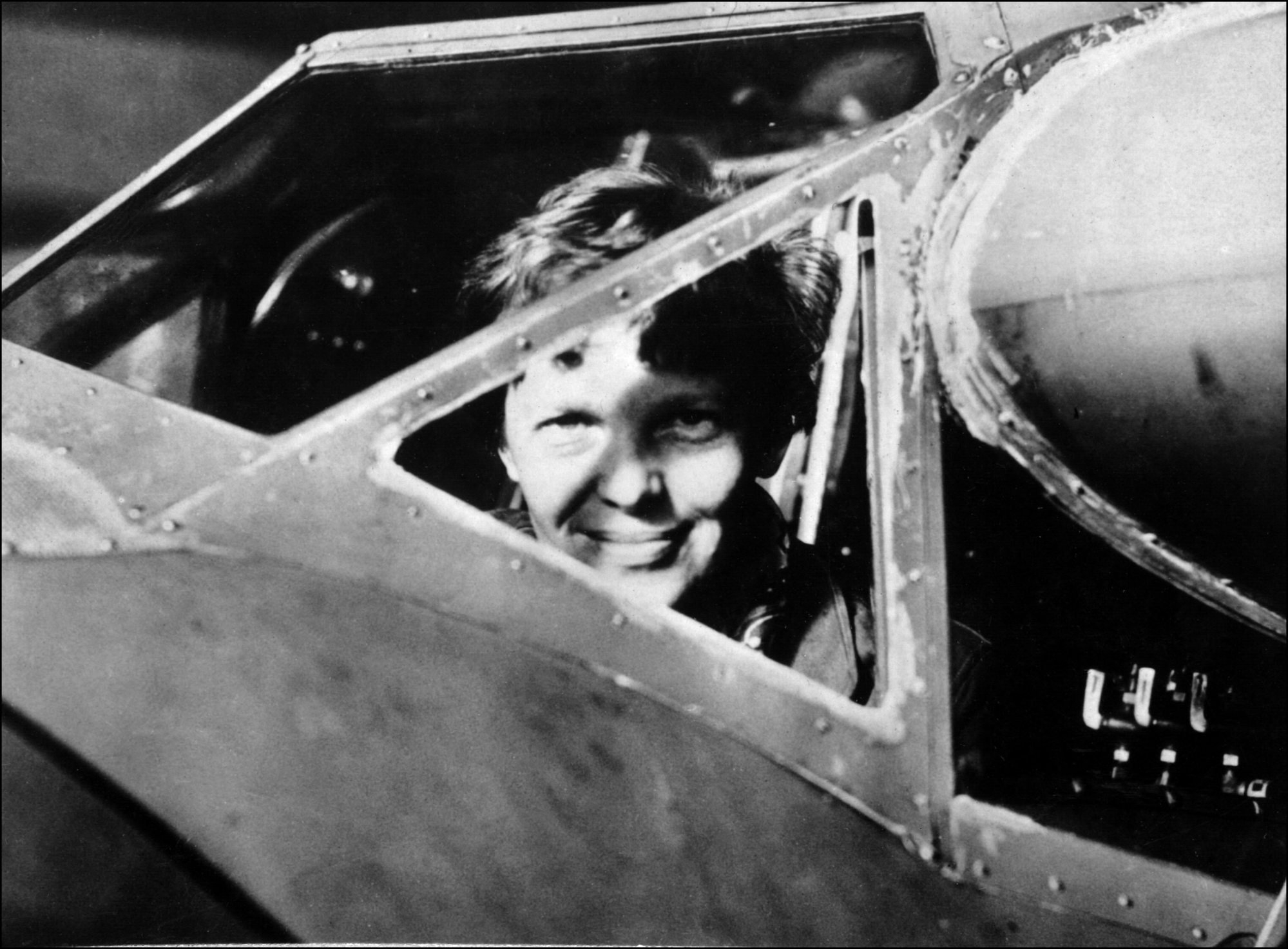
Amelia Earhart’s disappearance: can a blurry sonar image solve ‘the greatest mystery of all time’?
- A blurry sonar image has sparked frenzied speculation that a deep-sea exploration company has located the plane flown by Amelia Earhart that disappeared in 1937
- The deep-sea exploration company that released the image says they need a follow-up expedition to obtain higher-quality images to determine if it is her plane
A fuzzy yellow-on-orange sonar image has sparked frenzied speculation that a deep-sea exploration company has located the plane flown by Amelia Earhart when she disappeared over the Pacific Ocean in 1937. But after 35 years of chasing arguably the most famous female aviator in history, Ric Gillespie believes South Carolina-based Deep Sea Vision (DSV) is going to be disappointed.
The most likely explanation for the contact, he believes, is “something that fell off a ship,” possibly during the chaotic years in which war raged across the Pacific, or a ditched swept-wing US fighter, the kind that operated from US Navy aircraft carriers in the region in the 1950s and 1960s.
Amelia Earhart’s disappearance: a tiny atoll and a smoking gun
Gillespie’s assessment will only be confirmed when DSV returns to the site with a follow-up expedition to obtain higher-quality images, but the founder of the International Group for Historic Aircraft Recovery (TIGHAR) knows something about disappointment in hunting for Earhart’s elusive aircraft.
Still, there’s no doubt DSV’s announcement last month, has captured the imagination of all those fascinated with what actually became of Earhart in July 1937.
In a statement, the company said its side scan sonar revealed “contours that mirror the unique dual tails and scale of her storied aircraft.”

Tony Romeo, the company’s chief executive and a former US Air Force intelligence officer, said, “We always felt that she would have made every attempt to land the aircraft gently on the water and the aircraft signature that we see in the sonar images suggests that may be the case.”
Romeo believes the disappearance of Earhart is “the greatest mystery of all time,” adding that DSV now has “an opportunity to bring closure to one of the greatest American stories ever.”
The anomaly was detected while an advanced autonomous underwater vehicle (UAV) systematically surveyed more than 13,000 square km of the ocean floor off Howland, although the target was not noticed until the images were scrutinised several days later.
Amelia Earhart mystery solved! Or is it?
The three-month, US$11-million expedition ended in December, Romeo told CNN, and he is already planning to raise funds to return to the location in about one year.
Romeo subscribes to what is known as the “crashed and sank” theory, shared by many academics and historians, that Earhart’s Electra simply ran out of fuel as she attempted to locate Howland.

Yet another claim is that wreckage discovered by an Australian army patrol in New Britain in 1945 was Earhart’s long-lost aircraft, although efforts to rediscover the crash site have failed. It has also been suggested that Earhart completed her flight, but changed her name to Irene Bolam to escape public attention before settling in New Jersey.
TIGHAR’s rival theory is that on July 2, 1937, Earhart and her navigator, Fred Noonan, were unable to locate Howland, partly due to overcast weather as they approached the island on one of the last legs of their round-the-world flight. Rather than abandoning the plane at sea, TIGHAR believes Earhart flew along a bearing that brought her within sight of Nikumaroro, an uninhabited island belonging to Kiribati that was formerly known as Gardner Island when it was claimed by the British Empire.

Despite the evidence that TIGHAR has amassed, a part of the aircraft that would definitively answer what happened to Earhart has yet to be discovered.
Gillespie believes the plane touched down on tidal flats at one end of the island before being washed away by high tides and sinking in deep water, but searches have so far come up frustratingly empty.
It is for these reasons that Gillespie believes DSV is going to be disappointed when it returns to the target it has identified off Howland and sends another UAV down to the site.
This is a single image. It could easily not be aeroplane-shaped at all
“If you have an interesting sonar target, the first thing you do is get a sonar image of it from a different angle,” he said.
“This is a single image. It could easily not be aeroplane-shaped at all. And if it is an aeroplane, it has swept wings; Earhart’s aeroplane had straight wings.”
Gilespie said suggestions the wings could have been wrenched back by the impact of a forced landing could be discounted because of the strength of the main beam that ran crosswise through the cabin and connected the two engines.
If the target does in fact turn out to be an aircraft, Gillespie’s money is on it being a North American FJ-4 Fury jet fighter that operated off an aircraft carrier in the region but was ditched due to fuel exhaustion or as a result of a failed catapult shot.

